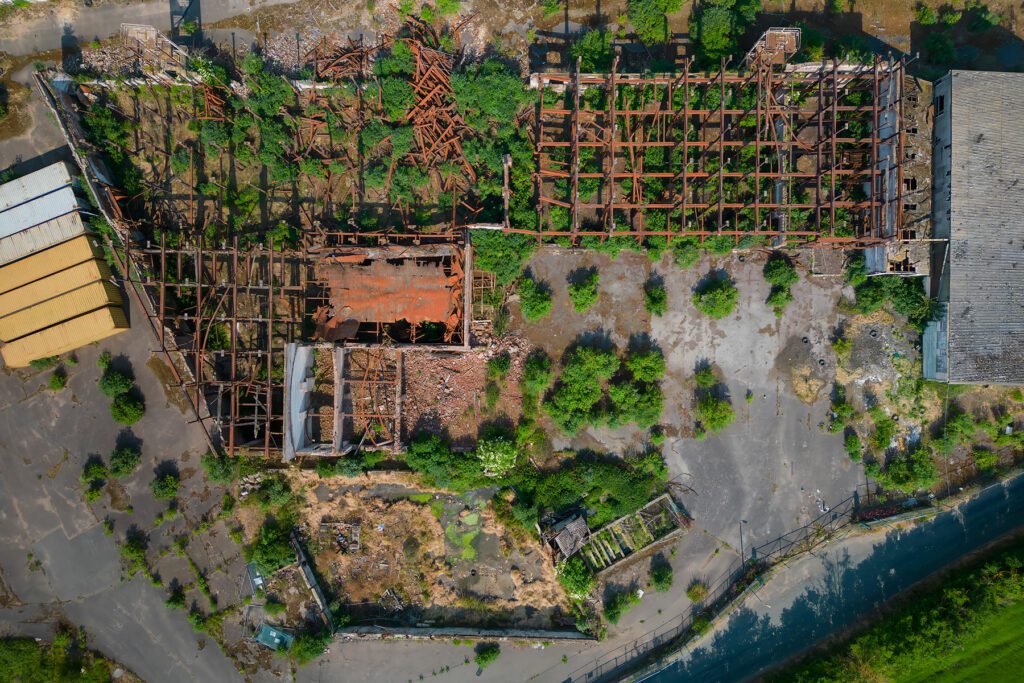Author
The overriding objective of the new Government’s proposed planning policy reforms (which are currently out for consultation) is the creation of 1.5 million new homes. Evoking Bob Ross’ charmingly idyllic pictures of peace and nostalgia with fluffy clouds and ‘happy little trees’, the Government has dipped its policy brush in the planning palette and come up with new colour blends to find the land on which to build these new homes.
We explain the different land designations and consider whether grey belt may offer new development opportunities on rural land.
Brownfield land
In keeping with existing planning policy, the Government proposes to take ‘a brownfield first’ approach. The existing policy encourages local authorities to help bring forward those brownfield sites that are suitable for development. Proposals for development of brownfield sites that are suitable for homes and other identified and are located within settlements are already given the benefit of substantial positive weight, to which the amendments propose adding that they are to be ‘acceptable in principle’ and may even ‘passported’ to fast-track them through the planning system, making such sites even more attractive.
So how are brownfield sites identified? First, a check should be made of the local authorities’ register of brownfield land. If the land is not on the register, then consider whether it is land which is or was occupied by a permanent structure (so not simply areas of hard standing) and its extent could include part or all of the curtilage (surrounding area) of the developed land. It should be noted though that land used for agriculture or forestry are excluded, as are land used for mineral extraction or landfill, residential gardens, and parks. Also excluded are areas of land where previous structures have naturally blended into the landscape over time, which is a subjective test.
Developments proposed on brownfield land, which is also known as previously-developed land, should be regarded as ‘acceptable in principle’ which is a good starting point for the prospects of a planning application.
Green belt land
The next colour in the planning palette is green.
Green Belt land will retain its high level of protection. Applications for development defined as inappropriate development will have to show ‘very special circumstances’ to secure the grant of planning permission. New buildings typically amount to inappropriate development in the Green Belt, making it one of the hardest protective designations to overcome in the world of planning.
Grey belt land
The final colour is grey.
The proposed change is that some Green Belt might be re-coloured as Grey Belt. Where that is the case then the scope of inappropriate development is to be narrowed so that housing, commercial and other developments in the Green Belt are capable of being regarded as appropriate, meaning applications no longer need to clear the high hurdle of showing ‘very special circumstances’.
The Government does not intend a wholesale removal of the Green Belt restrictions, rather it makes provision for the identification of Green Belt land capable of being Grey Belt on which development may now ‘be appropriate’..
Grey Belt land will be previously-developed land in the Green Belt that meets the Grey Belt tests.
Grey belt tests
- The first test for Grey Belt is that it is in a sustainable location. For a housing scheme this typically requires proximity to the existing services or to otherwise good transport links. However the NPPF adds much more detail regarding what amounts to sustainable development, encompassing economic, social and environmental considerations.
- Secondly, the transition to Grey Belt land must not fundamentally undermine the ‘function of the Green Belt across the area of the plan as a whole.’ On the assumption that the ‘functions’ of Green Belt are the extent to which the land serves the five Green Belt purposes, then for a site to qualify as Grey Belt the functions to be preserved are:
- preventing unrestricted urban sprawl;
- preventing neighbouring towns from merging;
- safeguarding the countryside from encroachment;
- preserving the setting and special character of historic towns; and
- assisting urban regeneration by encouraging the recycling of derelict and other urban land. These are a matter of geography.
- Thirdly, and probably a good starting point, the Grey Belt land must be located in a local authority’s area, which cannot demonstrate a five-year deliverable housing supply. There are other housing supply tests that might be capable of being taken into consideration in the alternative to this, but they are beyond the scope of this note.
- Finally, the proposed development will need to provide the following contributions. If solely housing, then the scheme must provide 50% affordable housing (although there might be the opportunity to make viability arguments to reduce this, but the proposed viability assessment is skewed against the landowner through the proposed imposition of a standardise benchmark land value). The scheme must also provide new or improved publicly accessible green spaces (or at least provide access to offsite green spaces).
In combination these four constraints call to mind a fourth colour: scarlet, as in the elusive scarlet pimpernel. But that does not mean the search will be fruitless. If a previously-developed Green Belt landholding is in an area short on housing delivery, then exploring the land’s potential for a Grey Belt designation may prove profitable.
For rural land owners or developers or promoters with the benefit of options, the assessment of land’s Grey Belt qualities can be applied to both the plan making and decision taking arms of the planning system, with Grey Belt arguments capable of being used by promoters to secure Green Belt allocations and by developers to secure positive decisions in the Green Belt.
The responses to the consultation will shape the proposed Grey Belt provisions, but the concept is likely to survive.
Should you wish to discuss any of the issues raised in this article, please contact Fergus Charlton.
Print article

